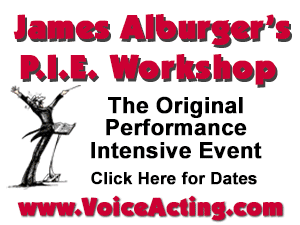AUDIOBOOKS - PART 2
How To Prepare A Non-Fiction Audiobook
For Recording - Search The Middle & Micro
September 23, 2016
 By Sean Pratt By Sean Pratt
Audiobook Narrator & Coach
See Part 1
Let's face it. One of the reasons so many non-fiction audiobooks are so boring is that the narrators didn't do their homework.
Here's the system I use for prepping any non-fiction title I narrate - and you might adapt this in a slightly different form for fiction, as well.
In Part 1, we discussed searching the book at the Macro level. Now, in Part 2, we delve into the Middle and Micro ...
Middle
Delving into the structure of how the book was put together
and
what kinds of research will need to be done
1. How is the book broken
down into its component pieces?
- Here we’re looking at parts, chapters,
exercises, testimonials, breakout boxes, etc.
- Why do you think they
structured the book in this way?
- How will you handle these different
elements during your recording to let the listener understand what’s
going on in the text?
- For some help on this, see my earlier article – The
Four Voices of Non-Fiction.
2. Foreign words, phrases, people, etc.
- Since guessing is really not an option here, the book's index is a great place
to start in generating a list for research, but be prepared for it to
be incomplete!
- Have your highlighter and a pen and paper handy as you
read the book … you’re going to need it!
3. Tables, charts,
illustrations
- Will you need to have the author write you something in
order to describe them to the listener, or if they are unavailable, can
you do it yourself?
- If there are too many of them, or they are too
complex to describe, you may want to suggest having the author or
publisher create a PDF of them for the listener to download.
4. Appendix
and footnotes
- Based on your judgment as to their direct relevance to
the book, will you include some, none, or all of them? You may need to
speak with the author or publisher about this, as well.
Micro
Parsing
the minutiae of the writing, by doing an analysis
of each chapter, in
the search for the "writer’s voice”
1. Finding the Spine of the
Paragraph
- This involves taking a marker and highlighting just those
passages in the paragraph that form the intellectual idea or thread of
their argument. By doing this, you’ll also identify all the digressions
of thought. Then you’ll be able to decide if a particular digression is MORE or LESS important than the
spine, and narrate it accordingly.
- Remember this old adage from the
theatre: If you make everything sound important, then nothing is
important!
2. Text layout (paragraph formation)
- This clue comes from
the world of graphics design. For instance, if the author has been
writing in nice chunky paragraphs and then suddenly writes a stand-alone
sentence, what are they trying to do or say?
3. Style of writing
- As
individual as a fingerprint, this is where you’ll find their "voice.”
- For example, do they set up certain patterns of delivery? Perhaps
stating their main idea at the beginning of every paragraph, writing the
summation in the next to last sentence, then offering some personal
comment at the end?
4. Tone and attitude
- Grave and serious? Sardonic?
Introspective?
- While a good writer can switch between these and many
other emotions, there will be at least one, maybe two, overall tones to
their writing.
5. Point of view
- 1st person: I, me, my ... 2nd person:
you, we ... 3rd person: he, she, they.
- Each of these will have a slightly
different style of delivery.
6. Sense of humor
- Not only do you hope
the author has one and is skilled enough to put it in writing, but
you’ll need to develop the ability to "sense the potential for humor”
when prepping the book.
- If you say this sentence or word in a certain
way or with a particular attitude, or timed in such a way, will you
illuminate their humor?
7. Words, words, words
- Writing, like acting,
is about choices. So why did they select this word or phrase over that
one, and what does that tell you about their intent?
8. Punctuation
- Think of these as musical rests or pauses that can indicate tempo,
rhythm, and intensity. For example, a writer in love with dashes and
semicolons may be telling you to keep the energy of the sentence moving
along; like a stone skipping across water.
Alright, Sherlock, get
busy … the game is afoot!
--------------------
ABOUT SEAN
Sean
Pratt has been a working professional actor in theater, film, TV and
voice overs for over 30 years. He holds a BFA in Acting from Santa Fe
University, NM. He has been an audiobook narrator for 19 years (aka –
Lloyd James), recording over 850 books in almost every genre, and has
received eight AudioFile Magazine "Earphones” awards and five "Audie”
nominations from the Audio Publishers Association. He narrates for such
companies as Blackstone Audiobooks, Tantor Media, Gildan Audio,
Hachette, Random House, Penguin, and Christian Audio. Notable titles
include A Death in the Family by James Agee, Infinite Jest by David Foster Wallace, Elvis in the Morning by William F. Buckley and Lindberg by A. Scott Berg. Currently, Sean coaches performers on audiobook narration technique.
Email: seanpratt@comcast.net
Web: www.seanprattpresents.com
Your Daily Resource For Voice-Over Success
|
 By Sean Pratt
By Sean Pratt









click for new article alerts